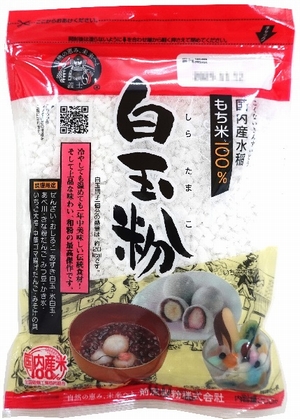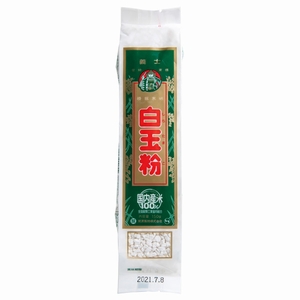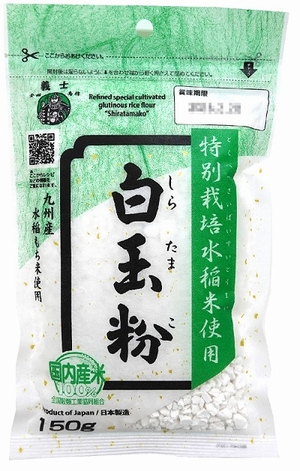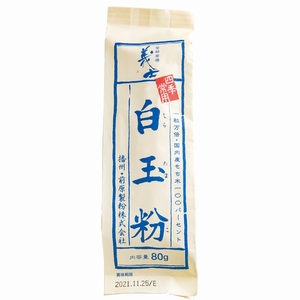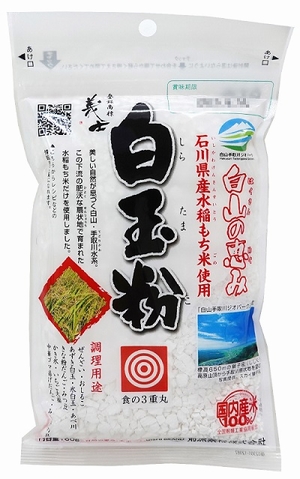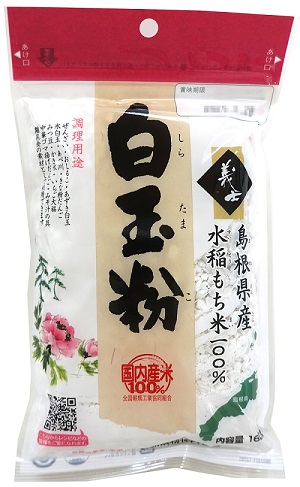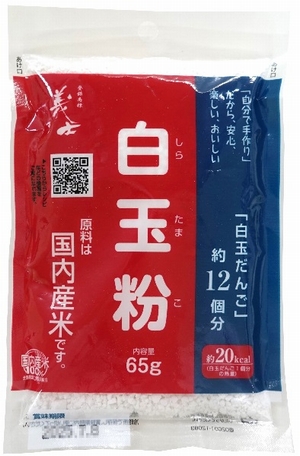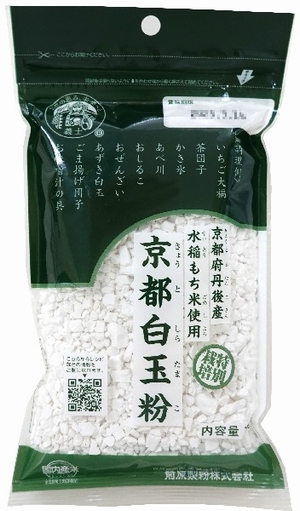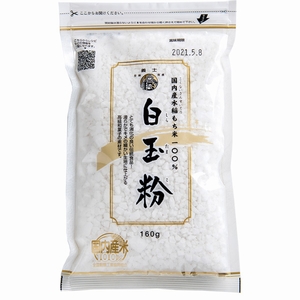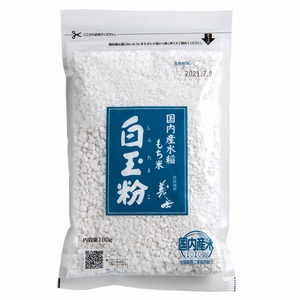商品案内白玉粉
寒ざらし粉とも呼ばれていて、もち白米を原料としています。昔は冬の寒さがきびしいころに、清潔な流水の得られるところで製造していましたが、現在は一年中製造されています。もち米を精白し、水に漬けて柔らかくして、水ごとすりつぶします。その白い液を圧縮脱水し、大きなかたまりにします。そのかたまりを細かく削り、乾燥して製造しています。良質なものは、乾燥が完全で、白色で光沢があり、粉質が微細です。ゆであげてフワッとした柔らかさと弾力があり、冷やしても固くならない品が、良品とされています。おもちとは別なまろやかな風味があり、白玉だんごやぎゅうひとして高級菓子材料になります。
Rice flour "Shiratama ko"
Rice flour, also called "Kanzarashi," is made of glutinous rice.
In the old times it was produced in the depths of winter where people can get running water, but now we can manufacture the flour all year round.
First, we polish the glutinous rice, next, we put them into water until it becomes soft. Then we grind the glutinous rice together with water.
After that we de-water and compress it to make a white ball shape. The ball shape is made into smaller round shapes and dried. Rice flour with good quality should be white, shiny, completely dried and minute. When we boil the rice flour it becomes not only soft but also elastic.
The rice balls which don’t become hard when they are cooled after boiling are of good quality.
It has a smooth taste which is different from mochi, and it is typically used to wrap of sweets "gyūhi" and flour dumplings (shiratama dango), and are materials for high-quality Japanese sweets.



